|
In my artworks i am very much inspired by the Hamsa Hand symbol - and so, if you've reached my website and you're wondering what a Hamsa Hand is, then i've gathered some of the most common questions that i'm asked, in this blog post to give a quick and easy overview! If you'd like to read more about the origins and history of the Hamsa Hand symbol you can do so in my Hamsa Hand article here on my blog, where i've also written about the symbolic elements that are often seen within the Hamsa Hand! 1. WHAT IS A HAMSA HAND? The Hamsa Hand is a symbol in the shape of an open hand with five fingers. The Hamsa Hand shows the palm of the hand toward the viewer, and it is thought to be an amulet for good luck & protection from negative forces, such as the evil eye. The Hamsa Hand amulet is worn as jewelry, hung on walls in the home, in businesses, on front doors and is often given as a gift! 2. WHAT DOES THE WORD 'HAMSA' MEAN? 'Hamsa' comes from Arabic and means 'five' - it represents the 5 fingers of the hand. In Hebrew the word for 'five' is Hamesh, however the symbol is most commonly referred to using the Arabic term, yet kan also be spelled in different ways i.e. Khamsa. 3. WHAT DOES THE HAMSA HAND REPRESENT? The Hamsa Hand has many different cultural variations, but overall it's a positive symbol that represents protection from negative energies, promotes health, happiness, good luck, abundance, fruitfulness and good fortune. There is usually an eye in the palm as this eye is thought to protect against the evil eye (in hebrew it's called 'Ayin HaRa'). 4. DOES THE NUMBER 5 REPRESENT ANYTHING IN THE HAMSA? The five fingers have been connected in various ways in different cultures and religions. In Islam the Hamsa Hand represents the five pillars of Islam. In Judaism the Hamsa Hand represents the five books of Moses. It's also associated with the five fingers that are connected to the five mudras, the five Buddhist teachings & the five human senses. 5. WHAT ARE THE DIFFERENT NAMES OF THE HAMSA HAND SYMBOL? Because of the Hamsa's different meanings and interpretations in different religions and cultures it is also called The Hand of Fatima (Islam), The Hand of Miriam (Judaism) & The Hand of Mary (Christianity). It is also sometimes known as 'The Healing Hand'. 6. DOES IT MATTER IF THE HAMSA HAND FACES UP OR DOWN? As you've probably noticed, sometimes the Hamsa Hand is pointing the palm upwards and sometimes it's facing downwards. Since it's not an exact science it's of course left to interpretations and different assigned meanings, but in general there is no difference and the symbol can be used in both ways! 7. WHERE DOES THE HAMSA HAND COME FROM? The Hamsa Hand can trace it's origins back to ancient times, to Egypt, various mythologies, religions and regions. The Hamsa Hand as we know it today is most commonly known in it's shape and form as a symbol originating in Mesopotamia (modern day Iraq) and North Africa & The Middle East. You can read more about it's origins and entrance in to the Jewish culture in my article about the Hamsa Hand. 8. WHY DO I SEE THE HAMSA HAND IN MANY YOGA STUDIOS? The Hamsa Hand symbol has been increasingly adopted in the Western World where it's positive qualities and symbolisms of protection from negativity and evil forces resonates well with the modern day yoga practitioners. The Hamsa hand in Buddhism and Hinduism represents the chakras, the five senses and their different mudras- special hand gestures. These mudras are believed to re-direct energy flow throughout the body and the Hamsa Hand is therefore a natural fit in the Yoga practitioners world. 9. DO YOU NEED TO BE RELIGIOUS TO USE OR WEAR A HAMSA HAND? Not at all! The Hamsa Hand speaks to many people who enjoy it either for it's positive qualities as a good luck charm or as part of their own culture or because they like the different meanings and artistic expressions of the Hamsa Hand. 10. WHY DO YOU THINK THAT THE HAMSA HAND HAS BECOME POPULAR IN THE WESTERN WORLD? In the Western World the Hamsa Hands presence is increasingly felt as it can be worn or shown off in the home, also by non-religious people. Religious, spiritual or not, the Hamsa Hand seems to satisfy a human need to protect one-self and loved-ones from bad energies and jealousy and it speaks to people's inner wishes to connect with the positive aspects such as good luck, prosperity, health and protection. It has become a popular symbol within fashion and popular culture too because many celebrities and people who - with the rise of social media- are very much in the eye of the public. This may increase the need to connect with the protective aspects of the Hamsa Hand symbol. Meghan Markle, the duchess of Sussex, has even been spotted wearing Hamsa Hand jewelry. You can read more about the symbols i use in my art on on my website blog such as articles about the Hamsa Hand, The Eye, The Fish, The Dove, The Eagle, The Double-Headed Eagle, The Tree of Life, The Chai, The Pomegranate, The Hebrew Letters and more! Feel free to write to me through my website if you have any questions you're curious about.
0 Comments
|
MAY-BELL
|
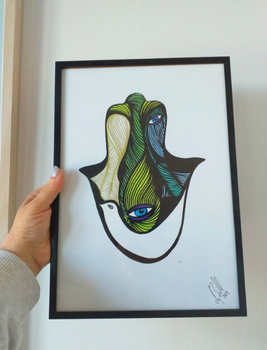
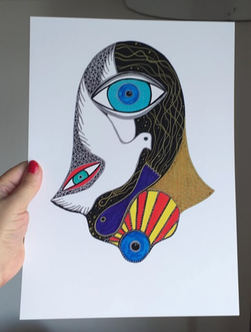
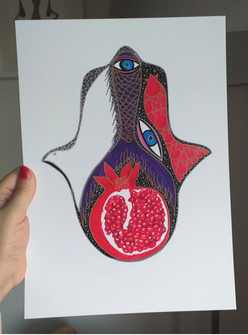
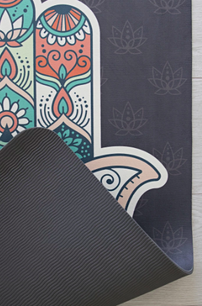

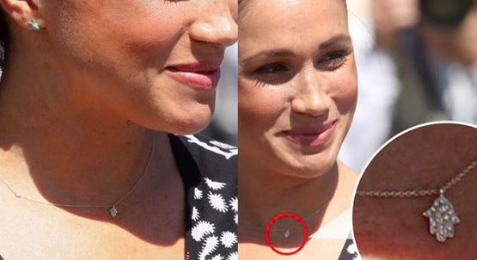
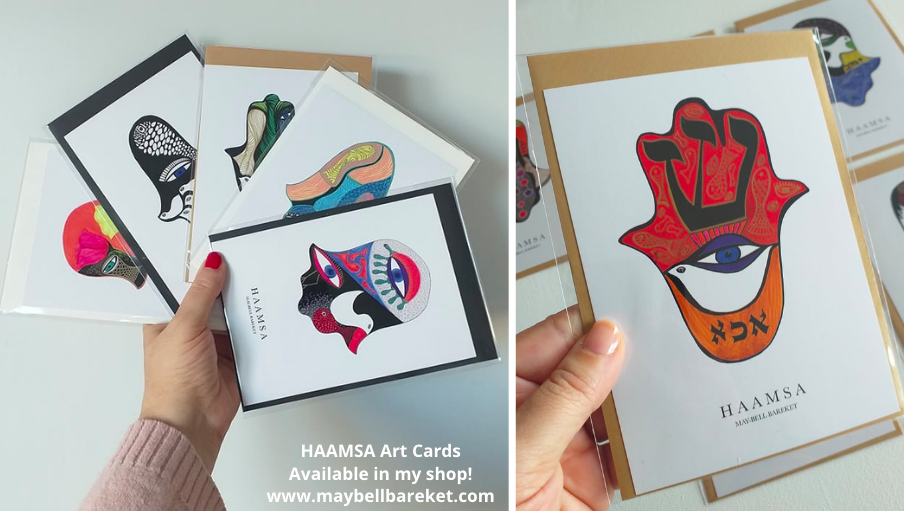
 RSS Feed
RSS Feed
